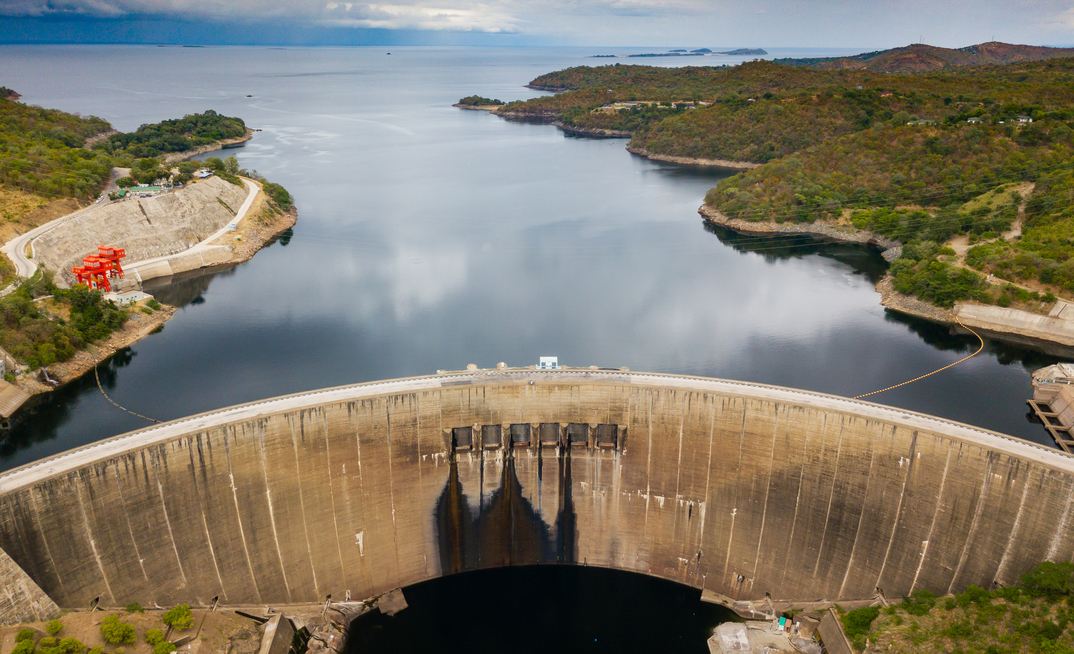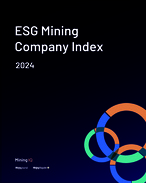A recent policy report by the London School of Economics' International Growth Centre (IGC) has done an in-depth dive into Zambia's copper industry, identifying crucial pain points and opportunities for the country's economic development.
Zambia is a significant player in copper mining in Africa, second only to the DRC. The country relies heavily on copper exports, which constitute more than US$6 billion of its annual revenue.
With the demand for copper growing as the world seeks green tech, Zambia's copper industry represents a massive opportunity for its growth - especially as new copper reserves continue to be discovered.
In February 2024, KoBold Metals, a California-based exploration start-up backed by Bill Gates, discovered a large deposit in Migomba, which it claimed is the "largest copper discovery in Zambia in more than a century."
YOU MIGHT ALSO LIKE
But IGC's report noted that Zambia's mining industry is currently centred around extraction and early-stage refinement, with much room for growth in downstream activities.
While the country's natural resources align well with the demand for decarbonisation objectives, the IGC said that challenges such as declining copper grades, energy insecurity and tax hurdles must be overcome.
The report identified a two-tiered solution through which Zambia can use its competitive advantage in copper to develop nascent industries, such as manufacturing, and move up the global value chain.
Declining quality
Zambia's assets are mainly concentrated in its Copperbelt province, with ten mines primarily focused on copper extraction. However, IGC's report noted that copper grades from these mines are declining steadily.
New extraction capacity is emerging in the neighbouring North Western Province, where the three top producers are now located, but key mines such as Kansanshi and Chibuluma continue to demonstrate high depletion rates, according to the brief.
Further mapping of mineral deposits is crucial to combat this issue. As it stands, the country relies on above-ground surveys, but more efficient mapping systems could help future-proof the industry.
IGC said in its report about Kobold's recent finding: "This additional discovery supports the urgent need for Zambia to complete a timely mineral mapping and build a comprehensive picture of the available resources from copper to other critical minerals for the transition."
Addressing energy needs
As it stands, 80% of Zambia's electricity comes from hydroelectric plants, according to the report. While a renewable source, this energy depends heavily on weather conditions. In particular, changing rainfall patterns due to climate change pose a risk.
Interestingly, mineral extraction uses over 50% of the country's generated electricity. This means that in order to sustain and build its mining sector, Zambia must pursue more reliable sources of energy.
IGC's report suggested solar power as a viable alternative, given the country's location in the solar belt, with high levels of irradiation.
Recognising this, the government has set a target to increase solar capacity to 500MW by 2030, representing 25% of the total renewable energy mix.
Challenges in scaling up solar energy include balancing capital costs with future returns. To combat this, the government is partnering with organisations like the World Bank to encourage private investment in solar projects.
The country is also working on co-locating renewable energy assets with operators, such as First Quantum, in a bid to bring down costs and mitigate risks.
Creating a reliable grid infrastructure will also help the country attract foreign investment, the report notes.
"Without further investment in low-cost energy, FDI activity along the mining supply chain may contract (...) A lack of reliable energy ranks highest among the barriers to doing business in Zambia (alongside contract enforcement and property registration), constraining new investment. Electricity access in Zambia will likely have spill-over benefits to firm productivity and foreign investment flows, if grid infrastructure and new generation capacity is supported."
An unstable tax regime
Another barrier to attracting mining operations in the country is an unstable tax regime, the brief reported.
While improvements in the business registration process, such as the transition to online applications for permits and licenses, have fostered trust in institutions, taxation policies remain uncertain in the country.
In recent years, Zambia's taxation policy has undergone significant changes, with adjustments to royalty rates and corporate tax exemptions. The report said that uncertainty around how much tax operators and investors will pay during a project life-cycle makes Zambia a less lucrative destination.
Instead, lessons from Chile's successful fiscal reforms can offer insight into the Zambian case.
In the Chilean example, the government facilitated prudent spending and saving during periods of commodity price fluctuations, leading to stability and resilience in the long run.
By exercising fiscal control and investing in productive activities that secure revenues even in times of commodity price volatility, Zambia can improve it's turbulent tax environment, according to the brief.
Up the value chain
To capitalise on its natural resource endowment, the IGC suggested a two-pronged solution for Zambia's mining sector.
First, it said that recognising the country's competitive advantage in copper and using it to propel up the global value chain is key.
By working on pain points such as unreliable energy supplies, Zambia can attract investment in upstream extraction and processing sectors by creating a favourable business environment.
It can then leverage its competitive advantage in copper and critical minerals to support nascent sectors poised for growth in a decarbonised future.
"The purpose of establishing linkages across the value chain instead of further exploiting natural resources is that the advantages or the economic gains from mining must be reinvested in the economy to create an opportunity for growth even beyond the extraction point," the report stated.
Another solution to move up the value chain is working with the DRC to establish a special economic zone (SEZ) to attract investment and create a manufacturing sector.
"Zambia is well placed to work with its regional partner, DRC, to position itself to sell both copper and cobalt to buyers along the electric vehicle supply chain. The establishment of a special economic zone (SEZ) between the two countries for the purpose of attracting EV manufacturers leverages both country's competitive advantage."
"This approach has the potential to give Zambia the power to shape the global value chain in electric vehicles but will require taking learnings from other place-based industrial policies."

























